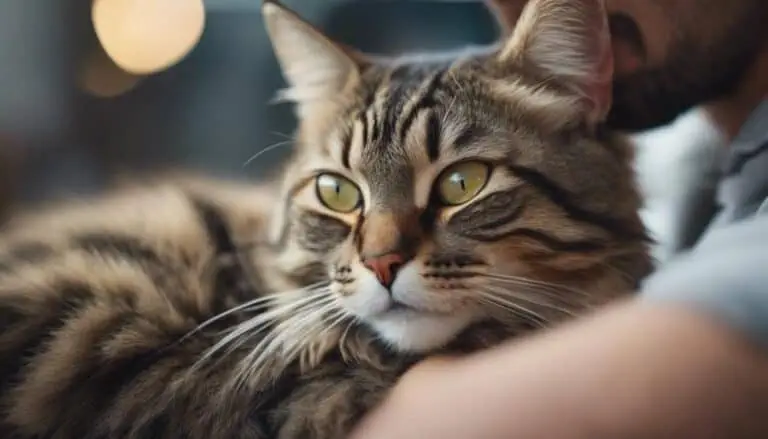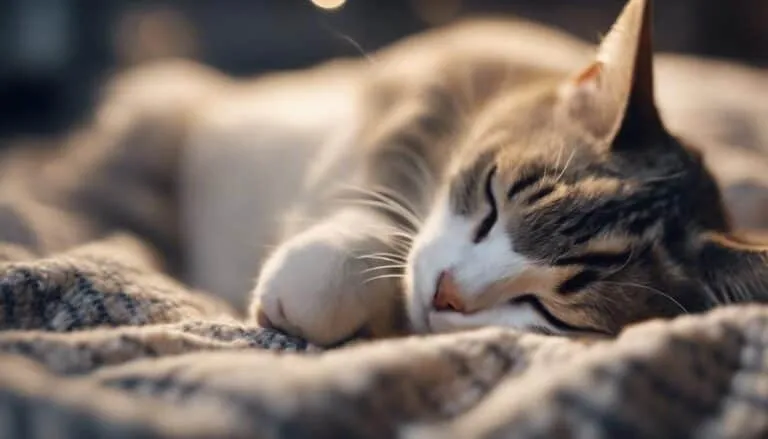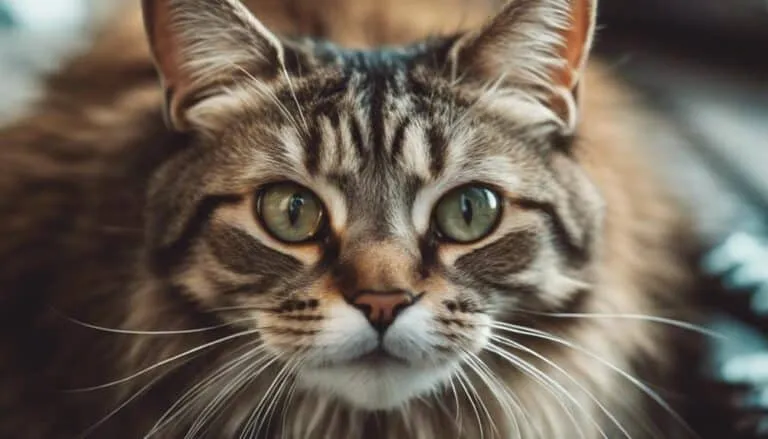The Best Fluffy Pancakes recipe you will fall in love with. Full of tips and tricks to help you make the best pancakes.

Introducing two male cats can be a delicate process that requires careful planning and consideration. While it may seem overwhelming at first, with the right strategies and a patient approach, it is possible to create a harmonious environment for these feline companions.
In this discussion, we will explore proven methods for successfully introducing male cats, including the importance of creating separate spaces, gradually introducing them to each other, and promoting positive associations through scent exchange and meal rituals.
By following these strategies, you can greatly increase the chances of a successful integration, fostering a peaceful coexistence between your male cats.
But there's more to uncover, so let's dive in and explore these strategies in detail.
Key Takeaways
- Take time and be patient when introducing male cats to each other, as rushing the process can lead to stress and tension between the cats.
- Provide a comfortable and secure space for the new cat, limiting their access to only one additional room to minimize potential confrontations.
- Exchange scents between the cats gradually to familiarize them with each other's presence and normalize the new cat's scent for the existing cat.
- Establish a meal ritual that encourages positive reinforcement and unity between the cats, feeding them near the door separating them and gradually moving the food bowls closer over time.
Preparing Separate Spaces
When introducing two male cats, it is crucial to prepare separate spaces for each cat to ensure their comfort and minimize potential conflicts. Gradual introductions are important in creating a positive environment for the cats. By providing separate comfortable spaces, such as separate rooms or areas, each cat can have their own territory and feel secure. This helps to reduce stress and prevent confrontations between the cats.
It is recommended to have separate bedding, litter boxes, and food and water bowls for each cat. Additionally, using screens or fences can help with the initial introductions, allowing the cats to see and smell each other without direct contact.
Practicing Patience in the Process
Patience is key when introducing two male cats, as rushing the process can increase stress and potentially lead to tension between the cats. Learning from past experiences, it is important to take the necessary time to slowly introduce the cats to each other.
Here are five tips for practicing patience in the introduction process:
- Spend more time on each step if the cats are not ready to progress.
- Avoid associating each other with negative experiences.
- Allow the cats to set their own pace and gradually adjust to each other's presence.
- Provide a calm and stress-free environment for the cats to interact.
- Be mindful when introducing cats of different ages, as they may have different energy levels and socialization needs.
Ensuring Comfort for the New Cat
To ensure the new cat's comfort during the introduction process, it is essential to create a secure space for them to land in, minimizing potential confrontations between the cats. Choose a room with two doors to prevent direct contact and limit the new cat's access to only one additional room. This will help maintain a sense of security for the new cat and minimize any potential conflicts.
Creating a calm environment is also crucial. Provide appropriate toys for the new cat, such as interactive puzzles or scratching posts, to keep them occupied and reduce anxiety. Additionally, consider using pheromone diffusers or calming sprays to create a soothing atmosphere.
Exchanging Scents
Exchanging scents is an important step in the introduction process of two male cats. Gradually introducing their scents to each other helps create a sense of familiarity and reduces the chances of aggressive behavior. Synthetic pheromones can also be used to facilitate this process.
Here are some strategies for exchanging scents:
- Use scent soakers like blankets, beds, and toys to absorb the cats' scents.
- Allow the new cat to decompress before swapping scent soakers, ensuring they feel secure in their new environment.
- Introduce the cats to each other's scents gradually, starting with brief exposures and gradually increasing the duration.
- Spread the new cat's scent throughout the home by rubbing their scent soakers on furniture and other surfaces.
- Normalize the new cat's scent for the existing cat by placing the scent soakers near their food and water bowls.
Establishing a Meal Ritual
Creating a consistent mealtime routine can help establish a positive association between the two male cats during their introduction process. Mealtime can be used as an opportunity to bring the cats together and encourage positive interactions.
Start by feeding both cats on opposite sides of the door that separates them. This allows them to associate the presence of the other cat with something positive, such as food.
Over the course of a few days, gradually move the food bowls closer together, increasing the proximity between the cats. This gradual increase in proximity helps to reduce any potential anxiety or tension.
Positive reinforcement techniques, such as praising and rewarding the cats for accepting the presence of the other cat during mealtime, can further reinforce their positive association.
Monitoring Body Language and Behavior
Establishing a consistent mealtime routine can also provide an opportunity for monitoring the body language and behavior of the two male cats during their introduction process. Understanding cat communication and recognizing signs of stress are crucial in ensuring a successful introduction.
Here are five key things to observe during this monitoring process:
- Posture: Pay attention to how the cats hold themselves. A relaxed and confident posture indicates a positive interaction, while a tense or defensive posture suggests potential conflict.
- Tail movements: Observe the cats' tail movements, as they can convey emotions. A relaxed and gently swaying tail signifies contentment, whereas an erect, puffed-up tail signals agitation or fear.
- Vocalizations: Listen to the cats' vocalizations. Soft purring and chirping indicate comfort, whereas hissing, growling, or yowling may indicate aggression or anxiety.
- Eye contact: Monitor the cats' eye contact. Direct, relaxed eye contact is a positive sign, while dilated pupils or prolonged staring can indicate tension or aggression.
- Body language: Observe the cats' overall body language. Relaxed and loose movements indicate comfort, while stiff or arched backs, raised fur, or flattened ears suggest stress or aggression.
Providing Playtime and Enrichment
Providing opportunities for playtime and enrichment is essential for the well-being and social integration of two male cats.
Interactive toys and environmental enrichment can help alleviate boredom, reduce stress, and promote healthy interactions between the cats.
Interactive toys, such as puzzle feeders or treat-dispensing toys, engage the cats mentally and physically, stimulating their natural hunting instincts. They can also provide a positive outlet for any pent-up energy or aggression.
Environmental enrichment involves creating a stimulating and engaging environment for the cats, with features like scratching posts, climbing trees, and hiding spots. This allows the cats to explore, exercise, and establish their territories in a safe and enriching manner.
Seeking Professional Help if Needed
If the introduction process between two male cats is not progressing smoothly or if there are signs of aggression or tension, it may be beneficial to seek professional help from a veterinarian or animal behaviorist. Seeking expert advice and consulting a cat behaviorist can provide valuable guidance and support in resolving any issues that arise during the introduction process.
Here are five reasons why seeking professional help is important:
- Expert knowledge: A veterinarian or animal behaviorist has the expertise and experience to understand the complexities of cat behavior and can provide tailored advice based on their knowledge.
- Objective perspective: A professional can assess the situation objectively and offer unbiased recommendations to address any challenges or conflicts between the cats.
- Behavior modification techniques: A cat behaviorist can employ behavior modification techniques to help the cats develop positive associations and reduce aggression or tension.
- Tailored strategies: A professional can develop customized strategies and a step-by-step plan to facilitate a successful introduction between the cats.
- Peace of mind: Consulting a professional can provide peace of mind, knowing that you are taking the necessary steps to ensure the safety and well-being of both cats during the introduction process.
Conclusion
In conclusion, successfully introducing male cats requires careful planning and consideration. By creating separate spaces, gradually introducing them to each other, and ensuring comfort and security, cat owners can promote a harmonious environment.
Exchanging scents and establishing a meal ritual can also help foster positive associations between the cats. Monitoring body language and behavior, providing playtime and enrichment, and seeking professional help if needed are additional strategies to ensure a successful integration.
By following these proven methods, cat owners can create a peaceful and stress-free environment for their feline companions.








